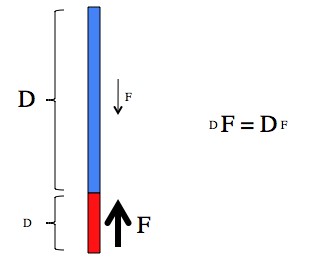Physicist: There’s a cute trick you can use here. It a falling object starts at rest and ends at rest, then it gains all of its energy from gravity, and all of that energy is deposited in your unfortunate foot.
Kinetic energy is (average) force times distance; whether you’re winding a spring, starting a fire (with friction), firing projectiles, or crushing your foot. The energy the object gains when falling is equal to its weight (the force of gravity) times the distance it falls. The energy the object uses to bust metatarsals is equal to the distance it takes for it to come to a stop times the force that does that stopping. S0, .

The distance times the force that gets an object moving is equal to the distance times the force that brings that object to a halt.
Of course, the distance over which the object slows down is much smaller than the distance over which it sped up. As a result, the stopping force required is proportionately larger. This is one of the reasons why physicists flinch so much during unrealistic action movies (that, and loud noises make us skittish). Something falling on your foot stops in about half a cm or a quarter inch, what with skin and bones that flex a little. Give or take.
So, if you drop a 10 pound ball 4 feet (48 inches), and it stops in a quarter inch, then the force at the bottom of the fall is . This is why padding is so important; if that distance was only an eighth of an inch (seems reasonable) then the force jumps to 4,000lbs, and if that distance is increased to half an inch then the force drops to 1,000 lbs.
The bowling ball picture is from here.








55 Responses to Q: When something falls on your foot, how much force is involved?